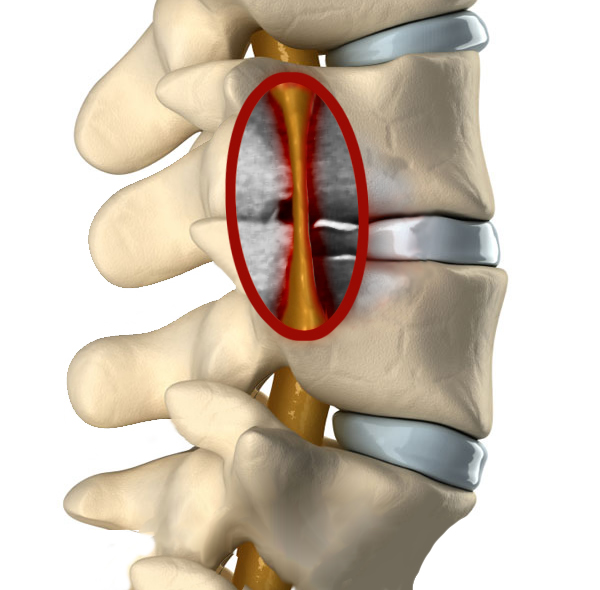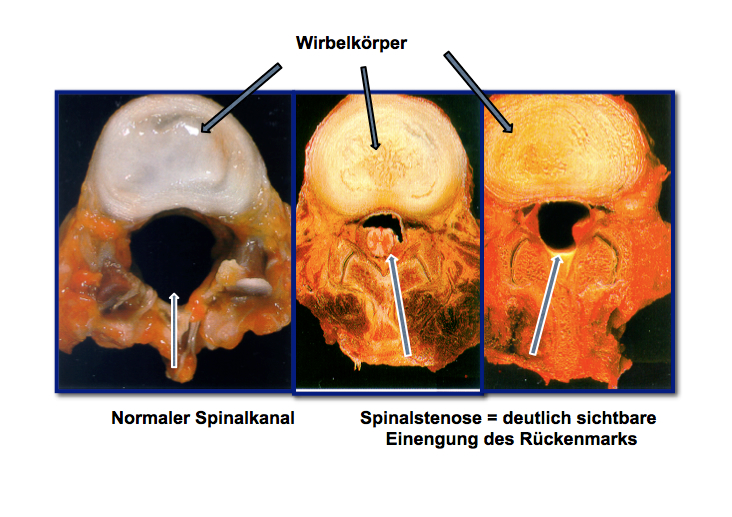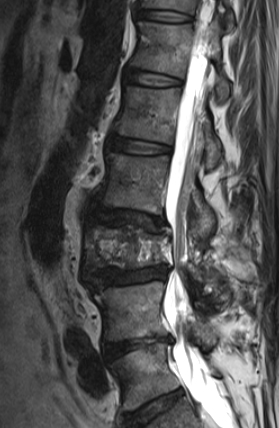
Spinal canal stenosis
Wear and tear on the spine stimulates the self-healing powers in our body. The body responds by growing bone tissue to support and stabilise the vertebrae. Often this exuberant bone matter leads to osteoarthritis of the facet joints and a narrowing of the spinal canal and the nerve openings (foramina). The consequences are severe back pain (lumbago), restricted movement and radiating pain (lumbo-sciatica), which can sometimes lead to paralysis symptoms. In this case we talk of ”claudicatio spinals” – a claudication, as in the vascular condition caused by circulatory disorders.

Decompression – relieving pressure on the spinal cord
If neurological deficits occur such as paralysis, pain, discomfort or limitations in walking distance, a surgical decompression of the spinal canal should be conducted. In this procedure it may be necessary to remove the exuberant bone matter, depending on its intensity. The removal of this exuberant bone matter may lead to an instability of the affected vertebral segments. If there is instability, it should be stabilised. Stabilisation can be achieved by using rigid internal support devices (internal fixator), which may however accelerate the onset of secondary complications, or by dynamic fixation systems (ex: Dynesis, CoFlex, DSS, Spine-shape). The advantage of dynamic stabilisation is the maintenance or restoration of mobility and function of the spine.

Stenosis of the spinal canal due to destruction of the third lumbar vertebra (Paget’s disease) and disc protrusion L4 /5.
Additional narrowing of the spinal canal by bony outgrowths on the vertebral arches and facet joints.
